2022 marks the tenth year that the National Institute for Transportation and Communities (NITC) has been supporting research, education, and technology transfer through our multi-campus partnership. With three successive US DOT university transportation center (UTC) grants, NITC has maintained a focus on creating sustainable, livable, and equitable communities through the federal research priority of improving mobility of people and goods.
Last year we embarked on creating NITC Research Roadmaps across six core transportation areas of our work, each aimed at identifying key gaps to guide the future direction of research and workforce development initiatives. But to look forward, we had to look back first on our cumulative decade of our work.
This summer 2022 we'll be releasing literature reviews and impact stories from a decade of NITC research covering some of the most important challenges facing transportation agencies and policymakers in:
- Transportation and Land Use
- Multimodal Data and Modeling
- Walking and Bicycling
- New Mobility and Technology
- Transportation Equity
- Transportation Resiliency
Led by Portland State University, this partnership includes University of Oregon, Oregon Institute of Technology, University of Utah, University of Arizona and University of Texas at Arlington.
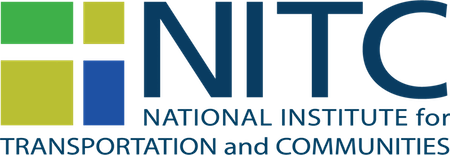
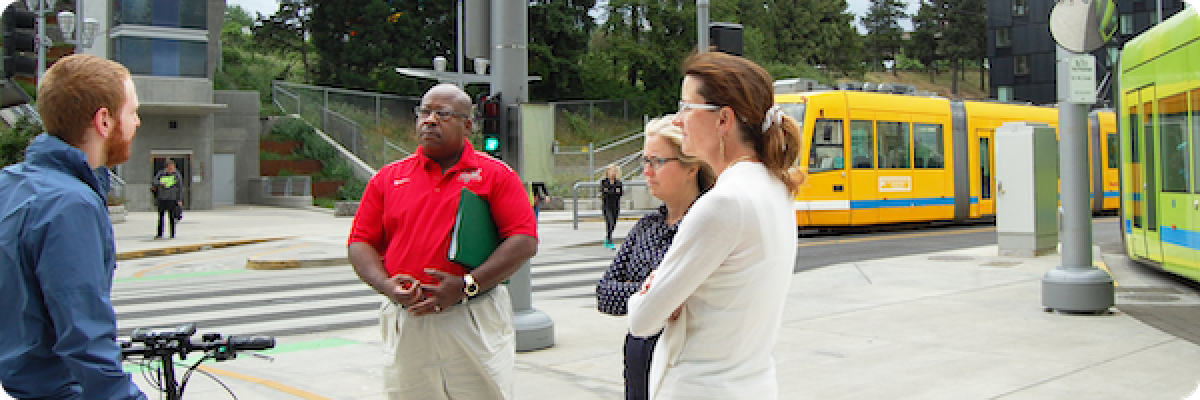
 Where people can afford to live can limit their transportation options and access to jobs, increase their costs, and displace them from community and cultural resources. Agencies need research to support decision-making and policy changes that prioritize equity at the intersection of transportation, land use, and housing at full scale: from regional issues all the way down to the bus stop level.
Where people can afford to live can limit their transportation options and access to jobs, increase their costs, and displace them from community and cultural resources. Agencies need research to support decision-making and policy changes that prioritize equity at the intersection of transportation, land use, and housing at full scale: from regional issues all the way down to the bus stop level.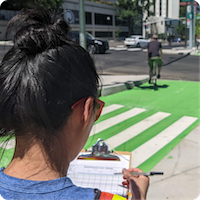 We need better data and tools for decision-making. Our research advances the collection, methodology, and analysis of multimodal data that supports professionals and researchers in understanding and predicting human travel behavior in order to optimize those systems for both the providers and users. These new models and tools examine the implications of changes to the system on a range of outcomes including equity, the environment, and health.
We need better data and tools for decision-making. Our research advances the collection, methodology, and analysis of multimodal data that supports professionals and researchers in understanding and predicting human travel behavior in order to optimize those systems for both the providers and users. These new models and tools examine the implications of changes to the system on a range of outcomes including equity, the environment, and health.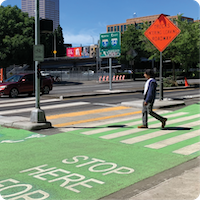 We have a long history in researching active transportation. Our studies have looked at bikeway infrastructure and signals to advance innovative design, and accessibility for bicyclists and pedestrians of all ages and abilities. We consider how cities and regions can better plan for and prioritize multi-modal transportation, particularly in historically underserved communities. NITC research has produced practical guidance for transportation professionals in cities across the country, and is being used to change national guidance such as the MUTCD and ITE Trip Generation manual.
We have a long history in researching active transportation. Our studies have looked at bikeway infrastructure and signals to advance innovative design, and accessibility for bicyclists and pedestrians of all ages and abilities. We consider how cities and regions can better plan for and prioritize multi-modal transportation, particularly in historically underserved communities. NITC research has produced practical guidance for transportation professionals in cities across the country, and is being used to change national guidance such as the MUTCD and ITE Trip Generation manual.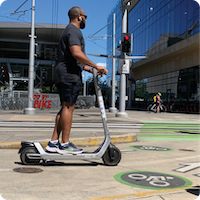 The growth of urban areas of all sizes requires the innovative use of technology and new mobility options. Our research on technologies (including connected vehicles/autonomous vehicles, electric vehicles, micromobility, ITS, and more) has a role in advancing mobility, increasing safety, and ensuring that new modes of travel are not leaving users behind.
The growth of urban areas of all sizes requires the innovative use of technology and new mobility options. Our research on technologies (including connected vehicles/autonomous vehicles, electric vehicles, micromobility, ITS, and more) has a role in advancing mobility, increasing safety, and ensuring that new modes of travel are not leaving users behind.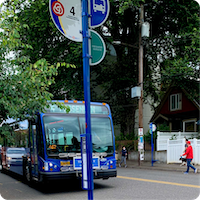 Well-connected regions and communities can improve social equity by providing access to jobs, services, recreation, and community. Our research looks at how to improve accessibility and affordability in our communities, while also addressing inequitable transportation invesments to advance racial equity.
Well-connected regions and communities can improve social equity by providing access to jobs, services, recreation, and community. Our research looks at how to improve accessibility and affordability in our communities, while also addressing inequitable transportation invesments to advance racial equity.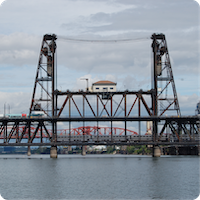 In recent decades, the increase of catastrophic environmental events has triggered concern for resiliency in our communities, the built environment, and our transportation system. This is reflected in the increased focus on and funding for resilience planning both within and outside the United States. For transportation studies, this has implied a need to better understand how environmental change events impact transportation systems, the intersection of these impacts with other community systems, and actions taken to prepare for, respond to, recover from, adapt to, and mitigate such events.
In recent decades, the increase of catastrophic environmental events has triggered concern for resiliency in our communities, the built environment, and our transportation system. This is reflected in the increased focus on and funding for resilience planning both within and outside the United States. For transportation studies, this has implied a need to better understand how environmental change events impact transportation systems, the intersection of these impacts with other community systems, and actions taken to prepare for, respond to, recover from, adapt to, and mitigate such events.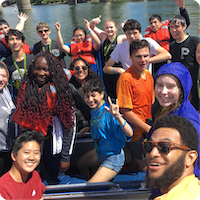 We go beyond research, looking at the classroom and how the next generation of transportation professionals will shape advancements in mobility. Our programs and curriculum are interdisciplinary - bridging gaps between planners and engineers, and U.S. universities. Programs include summer transportation camps for high school students, webinars for professionals, annual trainings on bike-ped curriculum for university educators, and more.
We go beyond research, looking at the classroom and how the next generation of transportation professionals will shape advancements in mobility. Our programs and curriculum are interdisciplinary - bridging gaps between planners and engineers, and U.S. universities. Programs include summer transportation camps for high school students, webinars for professionals, annual trainings on bike-ped curriculum for university educators, and more.

